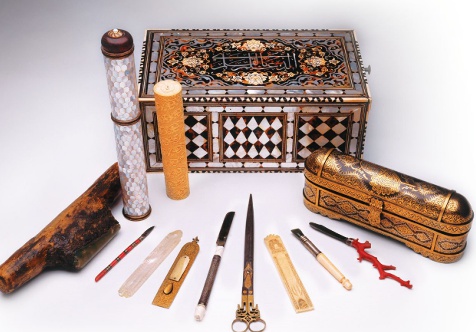In collaboration with Convergence, VOICE OF ASIA is proud to present timeless articles from the archives, reproduced digitally for your reading pleasure. Originally published in Convergence Volume 9 in 2011, we present this story on the art of calligraphy, keeping it alive in a modern context.
Derived from the Greek kalligraphia or ‘beautiful writing’, the art of calligraphy flourished in those places in the world where books and literature were highly prized by literate classes. Although its prominence has declined since the introduction of the printing press and the computer, calligraphy has had a long and storied history that spans Western Europe, the Middle East and East Asia, and is still respected as an art form, as we discover in this issue of Convergence.
An Expression of Harmony
Time honoured and revered by literate cultures around the world, calligraphy is a subtle and intricate form of art that conveys beauty through the written word. But unlike literature, in which meaning is paramount, calligraphy instead focuses on the visual aesthetics of language – its typography and arrangement as well as the calligrapher’s penmanship – and its effects on the script itself.
Each flourish and stroke of the pen or brush, in the hands of a skilled calligrapher, has significance and should express the concordant convergence of form and function in the written word.
In the view of Albertine Gaur, author of The History of Calligraphy, “The calligrapher is in harmony with his script, his tools, the text and his own spiritual heritage.”
Illuminated Manuscripts
Although other calligraphic forms exist, such as the Indic calligraphy practised by the peoples of South Asia and the now-extinct calligraphy of Mesoamerica, the most recognisable historical traditions of the art form were those that arose in Western Europe, the Islamic world and the Far East.
In Western Europe, calligraphy reached its zenith during the Middle Ages, during which time its vanguards had been monastic scribes who were tasked with copying the Bible as well as rare and valuable texts from earlier eras, as a precaution against them being lost to the ravages of time and the pilfering fingers of looters.
It was these enterprising monks who pioneered the technique of gilding their manuscripts with gold and silver leaves, a process called illumination, for the way the gilded metal would glint in the glow of candlelight.
Such prized manuscripts would often be commissioned by wealthy noblemen as early examples of conspicuous consumption, as well as overt displays of their religiosity if these manuscripts were religious in nature.
Painstakingly detailed and time consuming, illuminated manuscripts were often produced in Catholic monasteries where calligraphers confined themselves to scriptoriums, rooms specially set aside for this task.
The work often took a heavy toll on their health, as one 10th century monk complained, “It dims your eyes, makes your back ache, and knits your chest and belly together. It is a terrible ordeal for the whole body.”
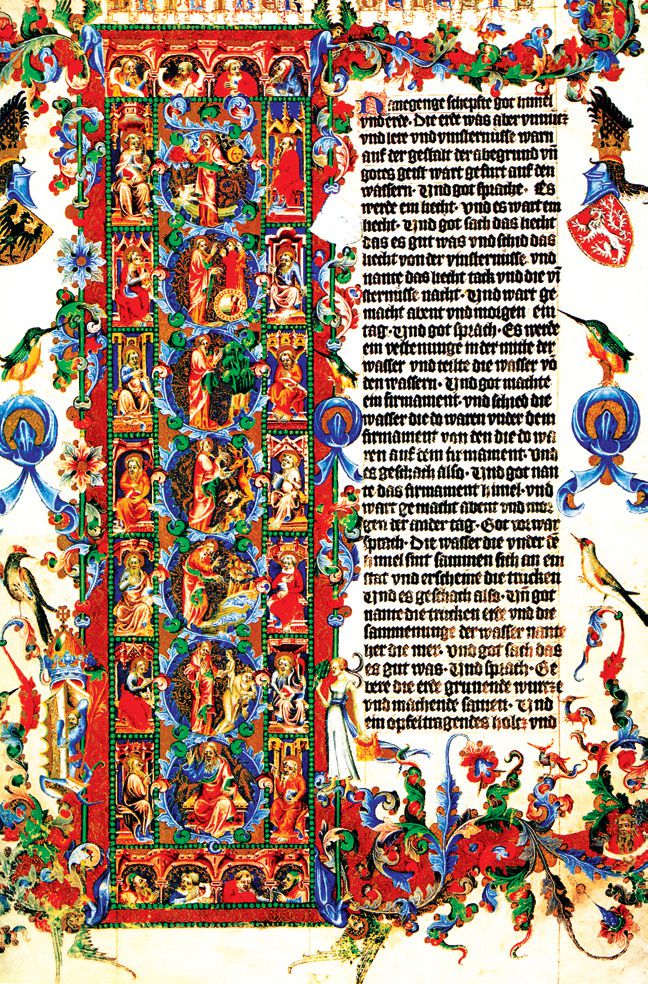
Geometry and Verse
In the Muslim world, calligraphy arose from similarly religious roots due, in part, to the Islamic religion eschewing the practice of figurative art as an act of idolatry. Instead, Muslim artists relied on the abstract depictions and the written word to represent the majesty of God and His creation. Drawing inspiration from the geometric patterns that adorn the walls and ceilings of mosques and other examples of Islamic architecture, calligraphers in the Muslim world developed unique geometric approaches to the art form, most famously, Kufic script.
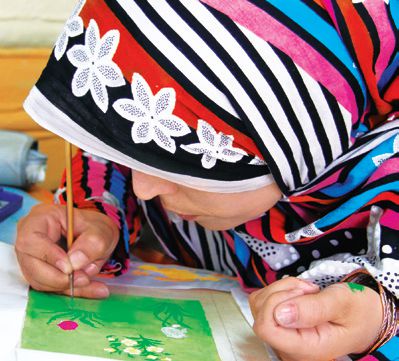
Calligraphers of Kufic script, whose name is derived from the Iraqi city of Kufa, employ straight lines and angles for geometric rhythm that results in a pleasing visual effect.
Used extensively in the copying of religious manuscripts between the 8th and 10th century, it was eventually supplanted by more cursive forms that forwent Kufic’s geometry in favour of legibility.
In time, the art of calligraphy would branch out and flower into various different forms and techniques as it spread across the expanse of the Muslim world, which, at its zenith, stretched from Spain in the West to China in the East.
Controversially, the development of one form of calligraphy pushed the Islamic ban on figurative art to its theological limit. Calligrams – written words arranged to resemble inanimate objects, animals, plants and in rare cases, anthropomorphic figures – found some currency around the 17th century. Regarded as an inappropriate expression of the art form by its master practitioners, it was nevertheless reproduced by folk calligraphers, especially in Turkey and Persia, where it was associated with Sufi mysticism. A modern example of an Islamic calligram is the logo of the international news station Al Jazeera, which is written to resemble a drop of water.
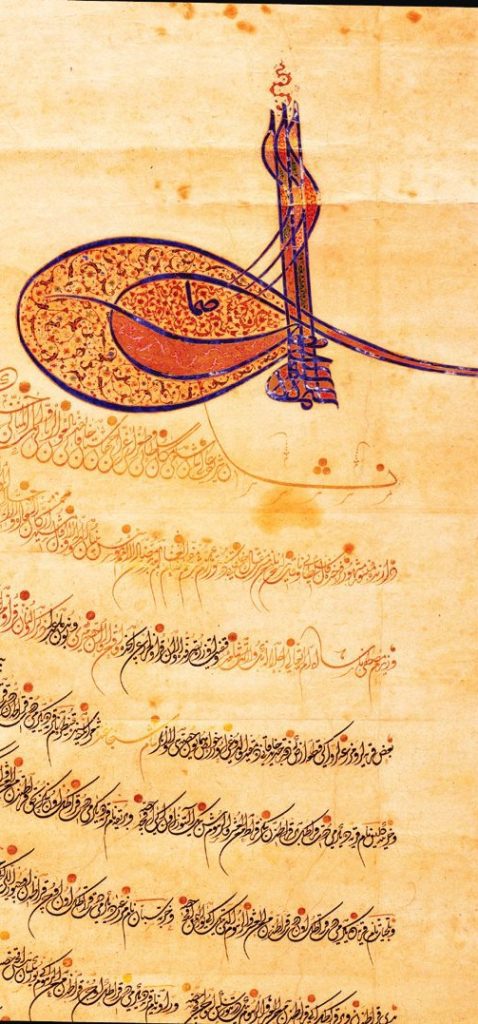
The Way of Writing
Further afield in East Asia, the art of calligraphy arose from a system of writing that predated its European and Arabic counterparts by several millennia and was influenced by Daoist and Confucian ideals instead of Christianity and Islam.
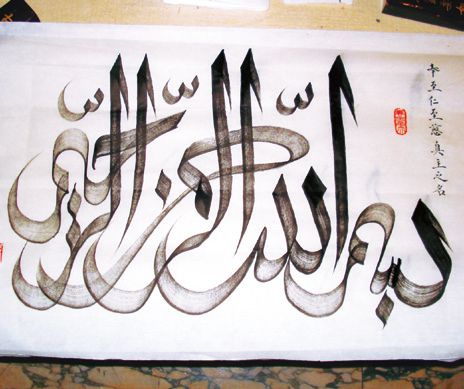
Here, the written pictograms of the languages of China, Japan, Korea and Vietnam showed natural inclination towards calligraphy’s artistic expression of form-function convergence, an aspect that would later vex attempts to convert moveable-type printing for traditional East Asian scripts.
The names for calligraphy in the region’s native languages translate as ‘the way/law of writing’, reflecting the emphasis on order and the correctness of action that characterise Confucian principles.
At the same time, the calligrapher cannot be slavishly bound to his art’s strict rules and structure. To be adept at the art, one must strike a delicate balance between discipline and spontaneity, echoing elements of Daoist philosophy.
Thus, while the expert calligrapher meditates at length on the subject matter and technique, he or she moves with fluid motion when applying brush to ink, ink to paper, in a masterful performance. As Albertine Gaur explains, “[Oriental] Calligraphy opens a direct channel between the writer and the onlooker. It must be contemplated, not just read.”
So highly regarded is this art form in East Asia that the implements of the artist – brush, ink, paper and inkstone – are called Wen Fang Si Bao or the ‘Four Treasures of the Study’, and in Imperial China, were considered indispensable to any respectable scholar as he was expected to be well-versed in calligraphy in addition to music, poetry and other arts that defined an educated man.
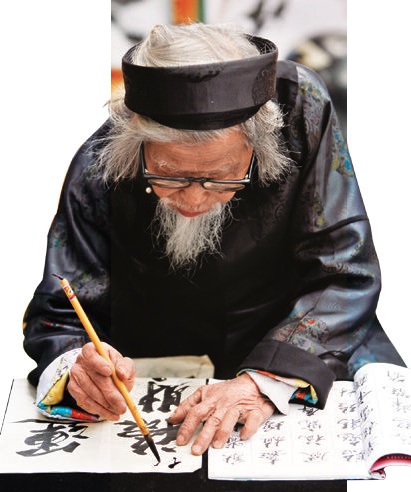
Although calligraphy may not enjoy the same kind of popularity it once did in its heyday, it still commands respect from those familiar with its past and its continuing influence can be found in contemporary art forms, such as modern typography and graffiti art. Today, art galleries, museums and artists’ groups dedicated to showcasing the brilliance and sheer variety of calligraphy ensure that the art form continues to be practiced and preserved for future posterity.


